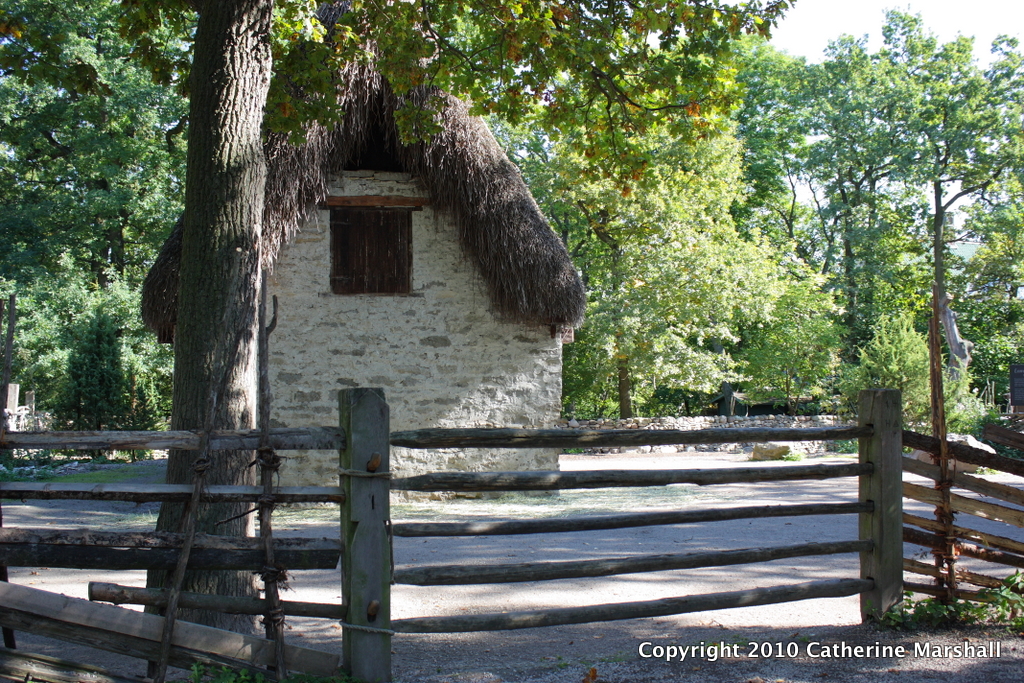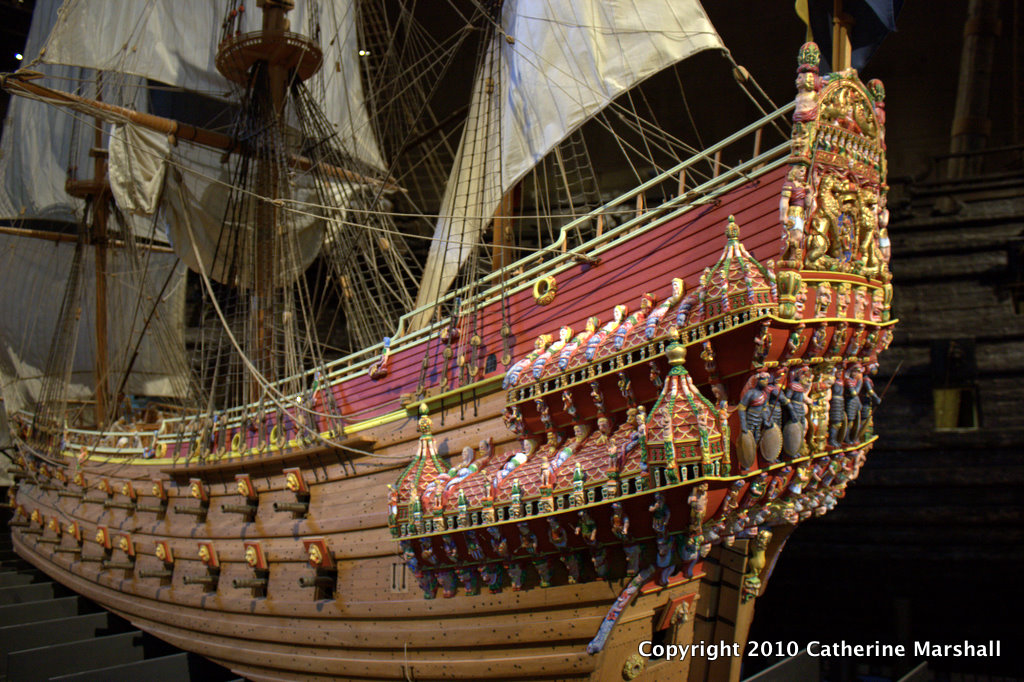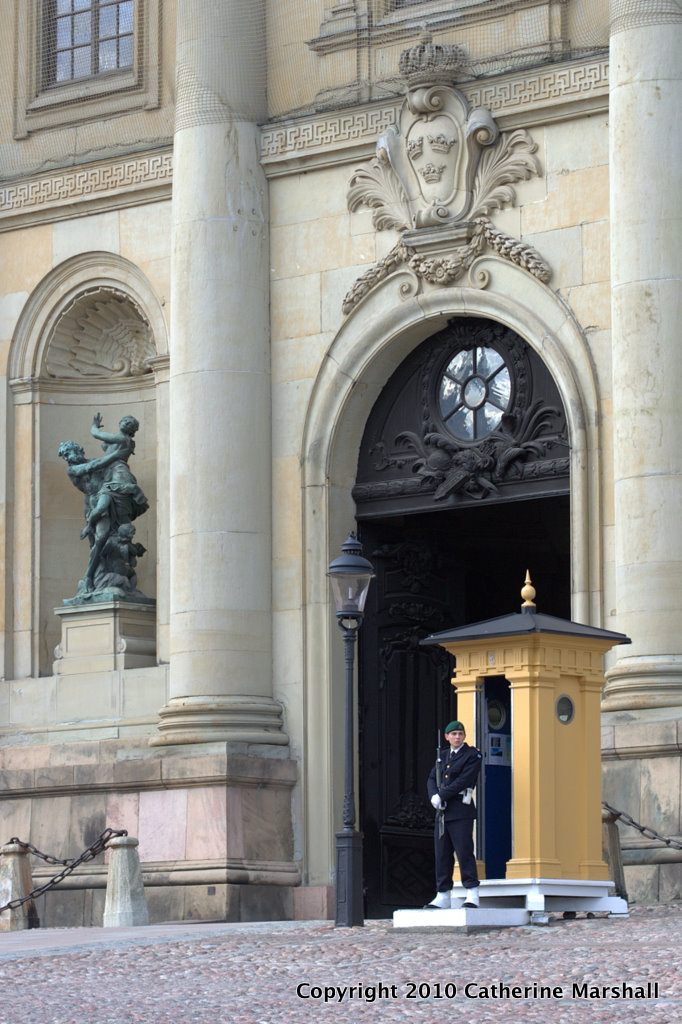Skansen is a large (approximately 75 acre) open air museum and zoo located on the island of Djurgården (as is the Vasa Museum). During our half-day visit, we did not expect to see it all, but we were able to walk around most of it. Skansen has buildings, exhibits, and activities that show what Swedish life was like in different parts of the country at various points in the past. Actual buildings from the times and places represented have been transported and kept in their historic state. The countryside areas include farmsteads, cottages, animal shelters, a manor, a flax mill, a fulling mill, a chipping house, a bakehouse, a blacksmith’s workshop, village halls, a church, and a school. In addition, there is a Finn settlement and a Sami camp in the countryside area.

The photo left shows a traditional stone barn with thatched roof. Such buildings were used to shelter animals during harsh winter weather. Many of the cottages and farmhouses we saw in the countryside area also had thatch or turf roofs. If you’re interested in learning more about the construction of traditional Swedish farmhouses, you should check out a webpage on The History of Swedish X-joint Log Houses by Hans Högman.
 |
|
The photos above show the interior of a countryside cottage. As you enter, you are in a room used for cooking and laundry. This room contains a small table, used for food preparation, and a large laundry cauldron that is heated from below by a wood file. Behind the laundry cauldron is a large, wood-fired oven. The middle room, a bit of which can be glimpsed through the first doorway, functioned as a sitting room and bedroom. Through the next doorway is a workroom with a floor loom.

The town area is reconstruction of a Swedish town from mid-19th century, again with original buildings, most of which are occupied by working craftsmen or guides in historic costume and role. To the right and below are photos from an historic bakery, where bread and rolls fresh from the oven were available for sampling. Within the town area, we also saw work underway in the pottery, glassworks, and furniture factory. In addition we visited the engineer works, the goldsmith’s shop, the ironmonger’s house, the tinsmith’s workshop, the herb garden (where tobacco was being dried), and the general store.






